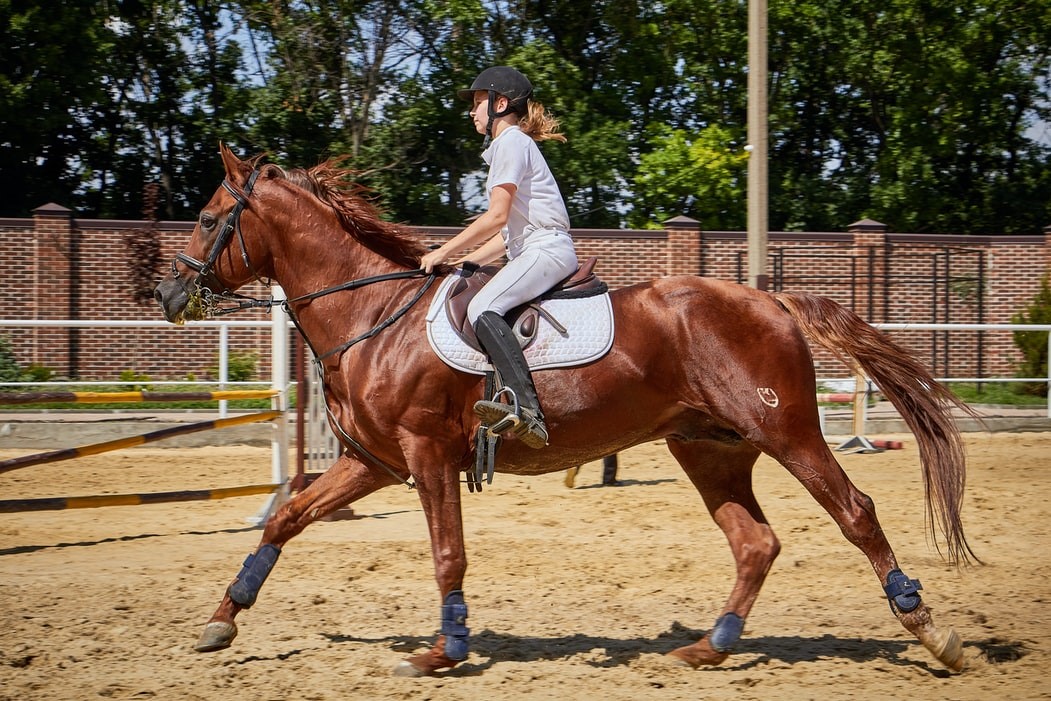Definition of osteoarthritis and symptoms of the disease
As in humans, osteoarthritis (otherwise known as “degenerative joint disease”) in horses is a degeneration of the cartilage that surrounds the bones of their joints. This pathology is progressive and irreversible, but it is possible to limit its progression. Contrary to popular belief, horses can suffer from osteoarthritis at any age (from 5 years old), especially sport horses. The pathology can appear due to too much or too brutal exercise. Osteoarthritis develops mainly in the limbs (foot, fetlock, hock, shoulder), but can affect other parts of the body such as the back or pelvis. If it affects the limbs, osteoarthritis manifests itself by intermittent lameness, especially on hard ground and at the very beginning of work. With warm-up, the lameness tends to disappear. You may also notice swelling in your horse’s joints, which is caused by synovial fluid leaking from the joint.
Treating osteoarthritis in horses
In order to make a diagnosis, your veterinarian may use x-rays, ultrasounds, scans, MRI or CT scans. Depending on the diagnosis, your veterinarian may recommend several types of treatment, such as infiltrations (intra-articular injections, for example of corticoids, hyaluronic acid, etc.), general anti-inflammatory drugs, mesotherapy (injection of products under the skin with small needles, on a given surface), or infusions of bisphosphonates (which act on the cells responsible for the destruction of the bone and therefore relieve the pain). If the osteoarthritis affects your horse’s limbs, the farrier will be able to adapt the shoeing and trimming of your horse in order to relieve its joints as much as possible. Also, make sure that your horse is not overweight, so as not to create additional pressure on the joints of its limbs.
Complement your horse’s diet
In addition to the treatments that the veterinarian may prescribe, you can supplement your horse’s diet with products that will promote the regeneration of its cartilage and relieve the pain. You can choose supplements based on hydrolyzed collagen and GAGs (glycosaminoglycans, such as chondroitin), natural components of your horse’s cartilage. MSM (methyl-sulfonyl-methane) is also known to be very effective in relieving osteoarthritis. The complementary feed Royal Horse C-500, with MSM, chondroitin of non-animal origin, glucosamine and antioxidants as active ingredients, is ideal to keep the joints of your horse suffering from osteoarthritis elastic and supple, and to limit the inflammatory effects. Some plants also relieve pain or inflammation of the joints, such as Harpagophytum (or devil’s claw), turmeric and ginger.
Adapting your horse’s work
If your veterinarian diagnoses osteoarthritis in your horse and prescribes treatment, some adjustments will need to be made to his work. In particular, you will have to spend more time warming up your horse before a session, so that his joints warm up properly. Your horse’s activity must remain regular and prolonged rest periods should be avoided. You should also choose a soft and good quality ground for your sessions in order not to cause shocks to your horse’s joints.



